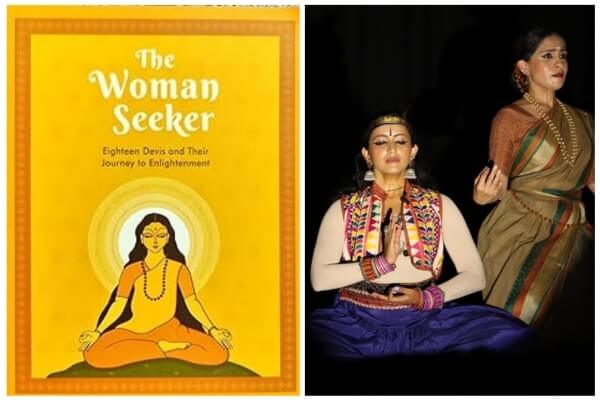Many women seekers have decorated the spiritual space in India – some to an astonishing degree. Some of them have gone to the extent of denouncing their families in favour of realising the Brahman or devotion to a Parama Purusha such as Shiva or Krishna.. They didn’t care for the fact that such a step would be considered ‘wayward’ or antisocial in the male-dominated society in which they lived. These women have composed and left behind a rich treasure of songs and hymns and enlightened the people around them.
A compiling the work of 18 such Women Seeker’s has been published by Central Chinmaya Mission Trust. Entitled The Woman Seeker, it contains their life sketches, representative verses and songs, and corresponding translations and transliterations.
A very impressive volume of 308 pages, it is beautifully presented with the sketches of the seekers, and is a valuable resource for anyone in pursuit of knowledge about saintly women in India’s history.
“This manuscript was possible only due to the dedication of our wonderful group of Chinmaya Mission sevikas and sevaks who have brought out this work with such beautiful blend of artistic, historical and spiritual depth,” remarks Swami Swaroopananda.
The release of this book for Sydney in an event called Vivekachudamanis (at the Cherrybrook Community and Cultural Centre on May 4) was also unique. Swami Shrikarananda of the Chinmaya Mission, Sydney, released the book and spoke about its significance. He was generous in his appreciation of the service rendered by the many volunteers in its preparation.
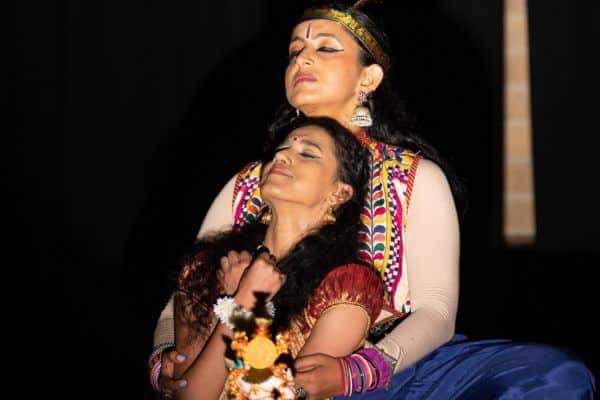
The homage to the Seekers, on this occasion, took the form of song and dance. Diversity was the key. There was diversity in form, language, ragas presented and the colours of the costumes on stage.
The music segment was co-ordinated by Prema Anandakrishnan, and various groups (one group appreciably all male) sang the compositions of selected seekers. These included hymns in Sanskrit, a song in the Assamese language, Paasurams of Andal in Tamil, hymns of Avudai Akkal, two Marathi songs composed by Sant Mukta Bai, and also hymns of Mata Roopa Bhavani in the Kashmiri language. That divine music filled the air with ragas such as Hamir Kalyani, Kamach, Hindolam and others floating about.
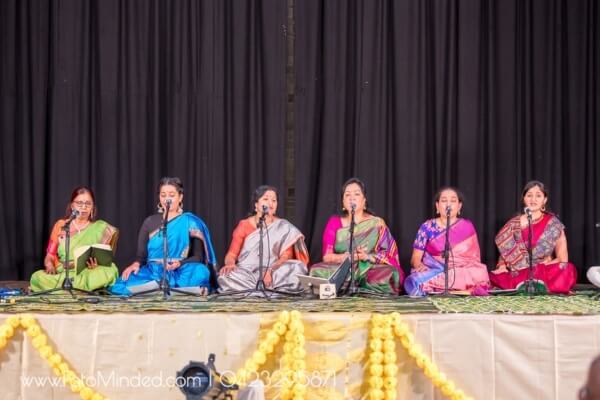
Shubha Harinath, Ranjith Das, Uma Ayyar, Lakshmi Abhishek, Prema Anandakrishnan and Chitra Krishnamurthy undertook the work of directing the different groups. They were ably accompanied by Sivakumar Sethupathi and Saayeesh Srinivasan on the Mirdangam, and Kanjira, Sharadh Venkataraman and Giridhar Thirumalai on the flute and Mohan Ayyar on the synthesizer.
A dance drama presented by Hamsa Venkat through the students of her Samskriti School of Dance stole the evening. It depicted the life and work of two Seekers – Avudai Akkal from from the South and Meera Bai from the North. Though they lived in different centuries and spoke different languages, their agony and ecstasy are similar.
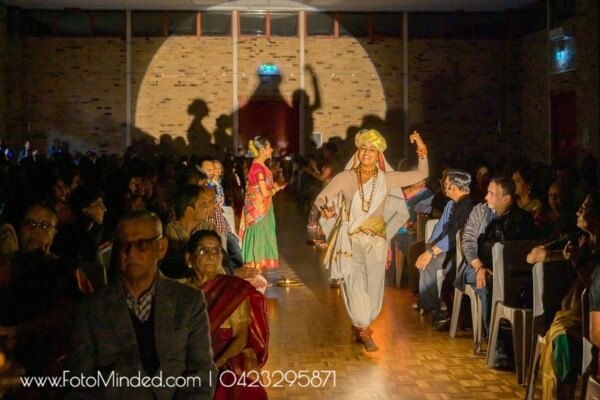
The presentation based on the woman seeker Avudai Akkal was wonderful in its choreography. Married young, and widowed young, she was confined and condemned to be indoors, as per the societal rules of the day. The dance drama started with Guru Sridhara Ayyaval (Sowmya Sriram) going through the streets dancing in the name of the Lord, Narayana Hari. The dancer and her team danced this out in the middle of the audience as if to pull them into a trance. Avudai Akkal (Vidya Gokul) then surrendered to the Guru who initiated and enlightened her and turned her into a composer. Three of her compositions were danced in the folk style. It became an intense drama with the lines Chandrodayam ache, kama krodha poche and Svabhava mukti sapala mache.
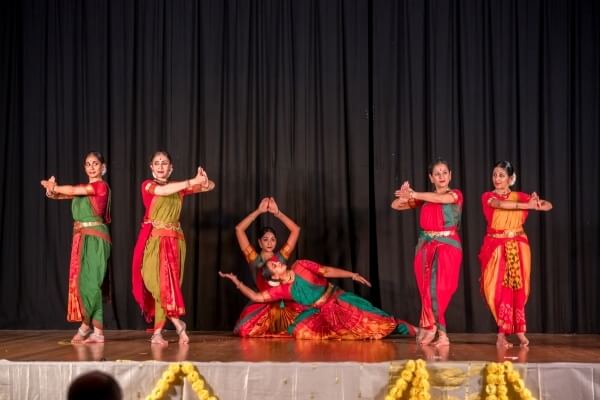
The story of the 15th century Rajput girl Meera is well known, but retold beautifully in The Woman Seeker. She was in love with Lord Krishna and as a consequence, her physical husband Rana meant nothing to her. More tho Giridhar Gopal, Dusaro na koyee. Ignoring the royal protocol, she danced and danced, Gunguru bandhu Meera Nacheere. Annoyed with this Rana sent her a drink laced with poison, Vish ka pyala Ranajee ne bheja, peevatha Meera hasee re. My intention here is not to narrate Meera’s life, but to explain the scenes in the drama as I saw them. The dance for Hari thum haro stood out. The participating girls including Vishakha Iyer (as Meera) and Sowmya Sriram (as Krishna) presented a heartfelt moving dance for the three episodes contained in it. One could not watch the Draupadi Manabhangha scene without a tear in the eye. So were the Gajendra Moksha and Bhaktha Prahlada incidents.
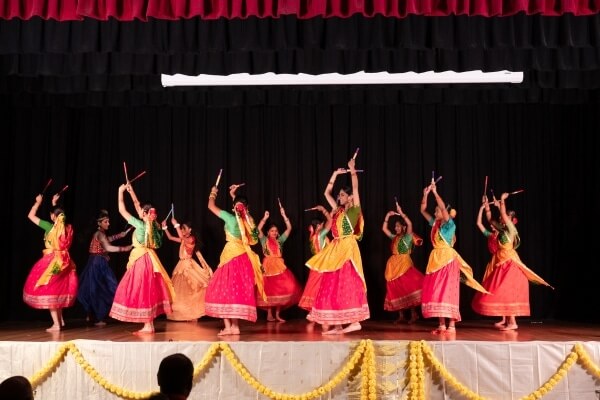
The power of dance and music was very apparent in this retelling of the stories of women seekers.
The concluding piece where the two saints stood still encircled by their followers, and the tableau where Meera, Avudai Akka and Krishna appeared together were examples of excellent choreography – very symbolic indeed.
The vocals for the dance drama were provided by Sai Vigneshwar, Sangeetha Ayyar and Sasi Kumar. Sughosh provided violin support while Jathushan and Giridhar Thirumalai were on the flute and Sai Akileshwar on the Mridangam. Mohan Ayyar was on synthesizer and Bala Sankar on tabla.
The evening concluded with a Thanaiavarthanam or percussion ensemble arranged by Sivakumar Sethupathi of R&S School of Mridangam. It was heartening to see young Adhya Sivakumar singing a composition of her mother on “Vivekachoodamanis” as a lead to the item.
Interestingly, 108 participants took part in this event organised during the 108th birth centenary year of Swami Chinmayananda. During the event, Swami Shrikarananda told the audience the significance of the number 108.
The efforts of Drs Uma and Janarthan, the organisers of the event to launch the book The Woman Seeker, are to be applauded. It is believed the entire proceeds of the event were donated to Chinmaya University in Kerala situated at the birthplace of Sri Adi Sankara.
Learn more about the Chinmaya Mission Sydney here



